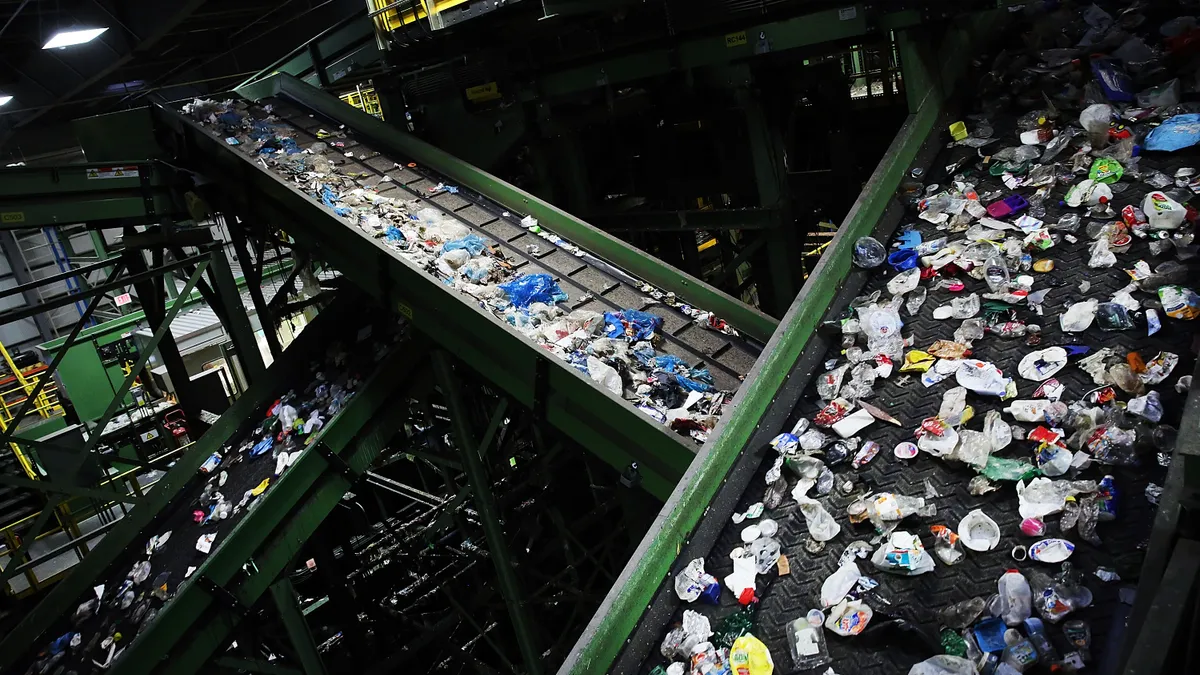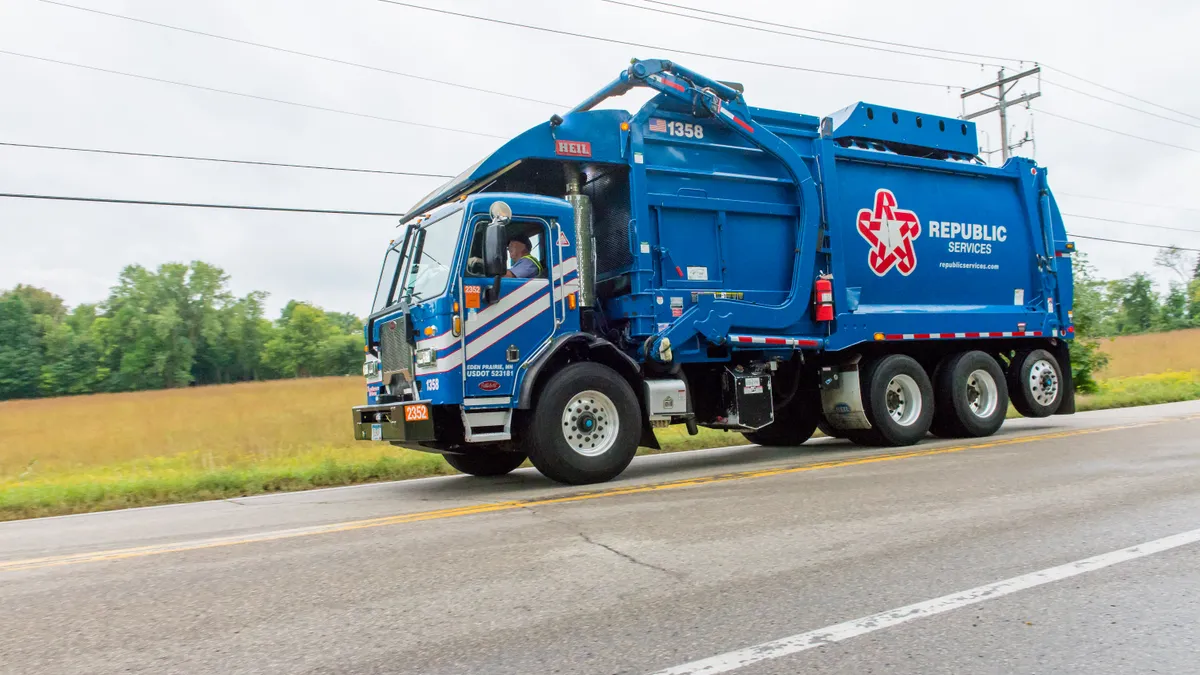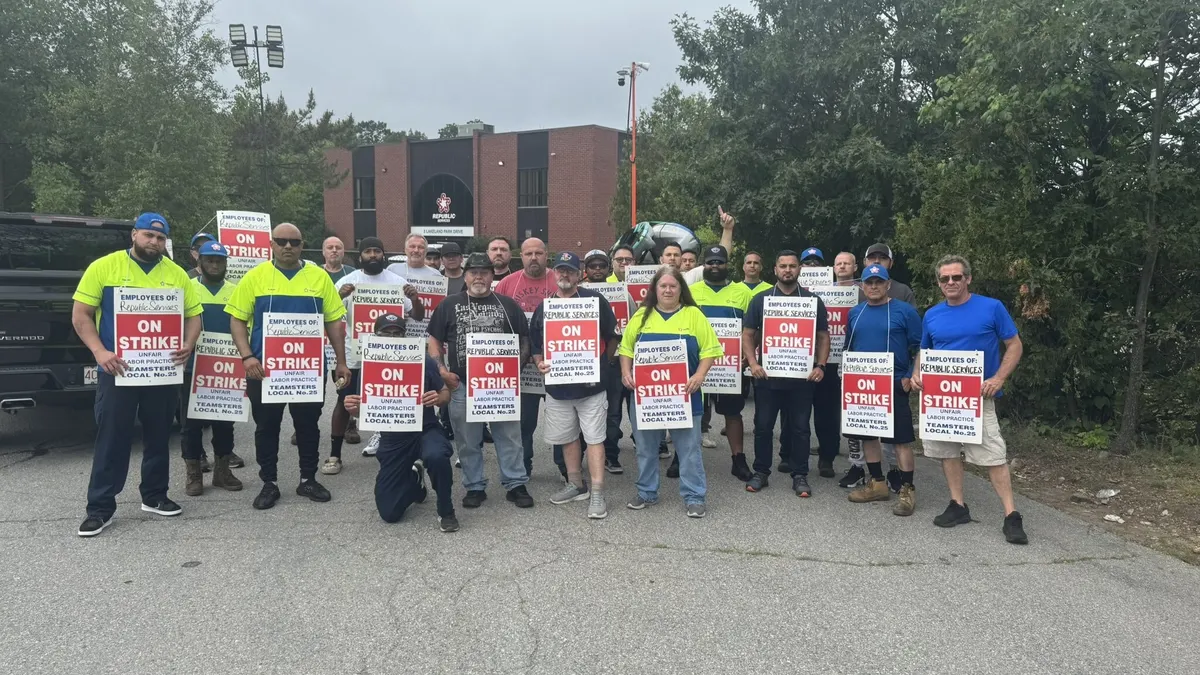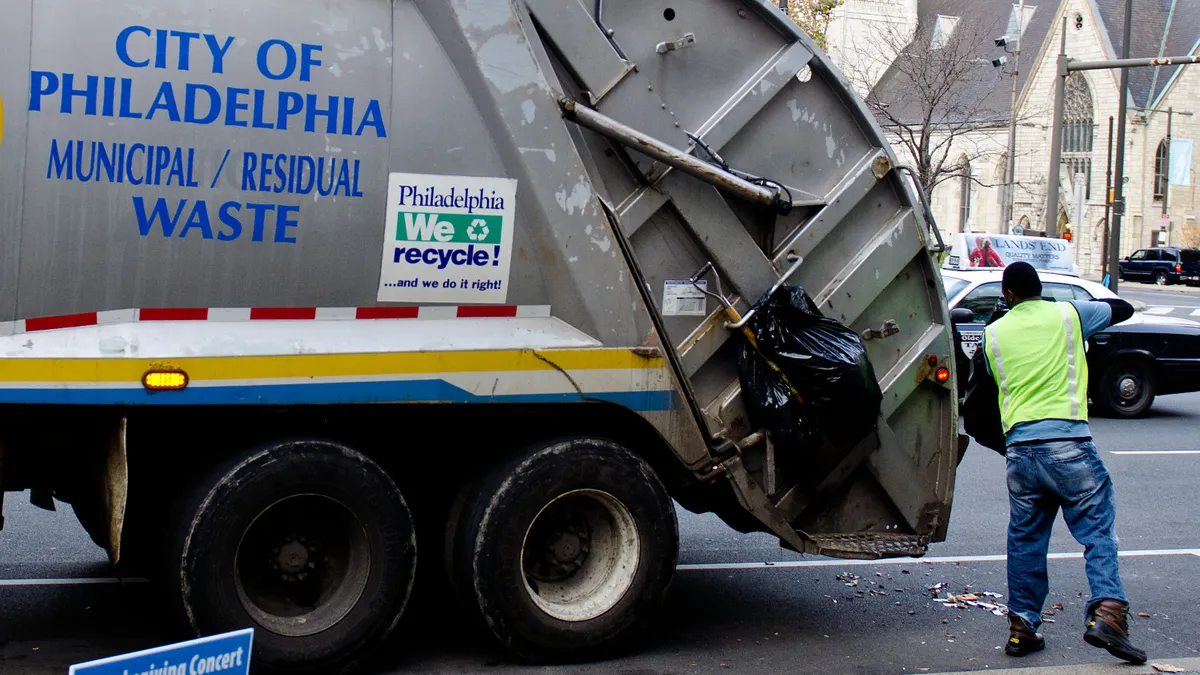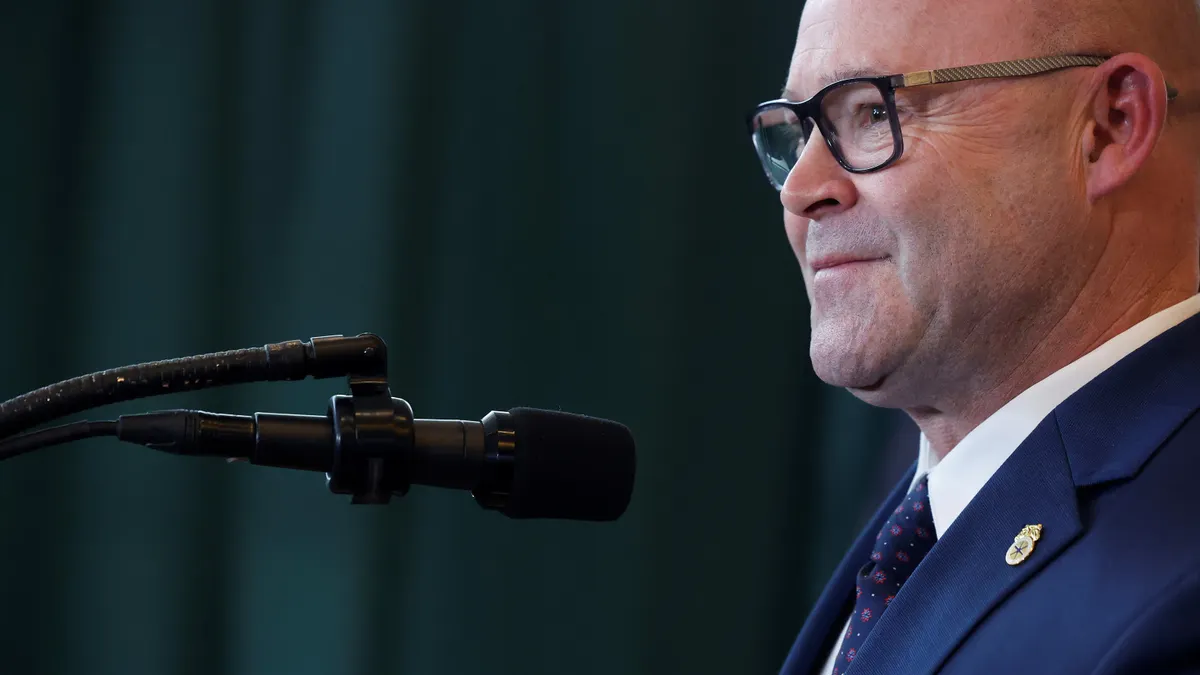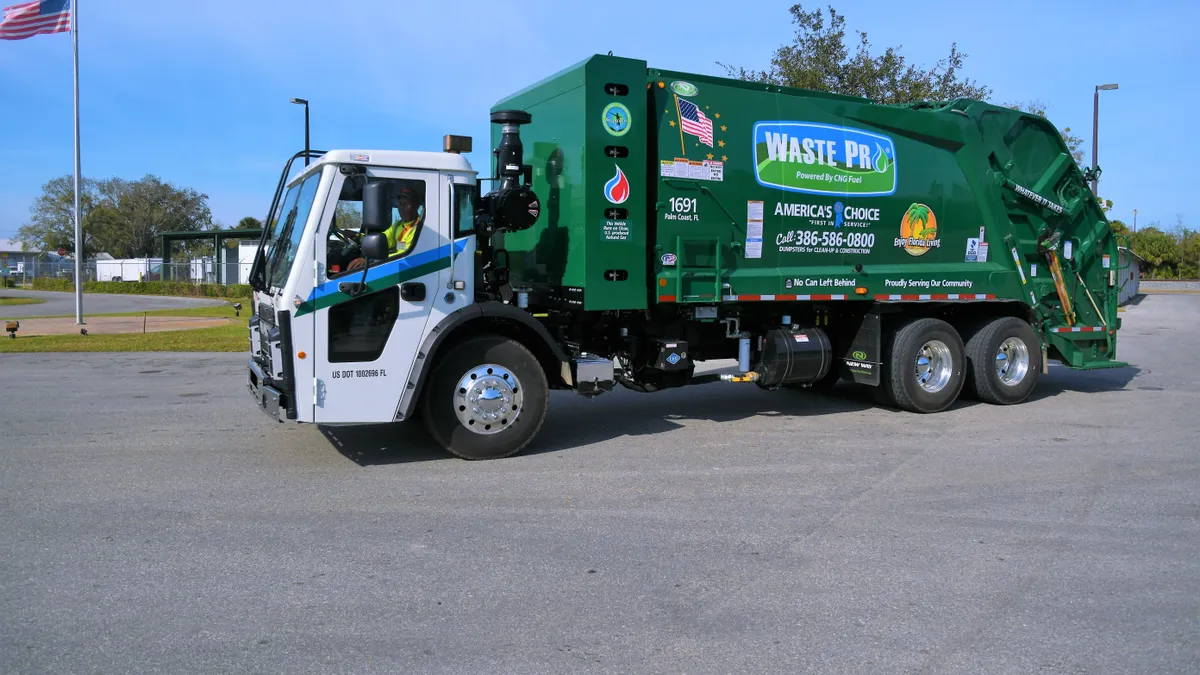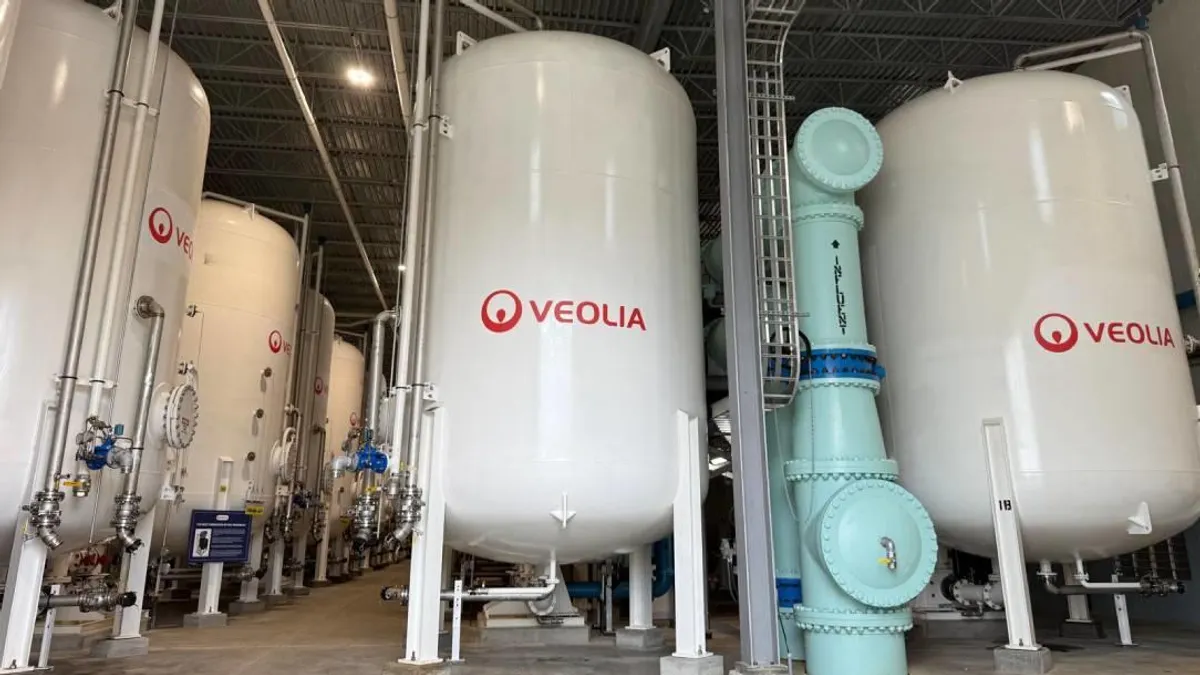UPDATE: July 8, 2020: The Recycling Partnership officially launched the Polypropylene Recycling Coalition today, with an initial $35 million funding target over five years. In its first move, the coalition released a request for proposals calling on recyclers to apply for grant funding that will be used to purchase "equipment or process investments that establish permanent and sustainable MRF acceptance and recycling of polypropylene packaging." Applications will be accepted on a rolling basis.
Initial members include Keurig Dr Pepper, Braskem, the Walmart Foundation, the American Chemistry Council, Danone North America, EFS Plastics, KW Plastics, LyondellBasell, Procter & Gamble, St. Joseph Plastics, and Winpak. The group is seeking additional members and will also be advised by a separate committee of related organizations.
March 4: As the recycling industry figures out what to do with the mixed plastics it used to send abroad, one resin category is seen as standing the best chance of dodging the landfill. The question now is how much investment it will take for polypropylene #5 to become a larger and more consistent presence in the recycling supply chain.
To ensure that domestic reuse supply chain develops, The Recycling Partnership recently said it plans to start a new group that will bring together manufacturing and recycling stakeholders to solve collection, processing and reuse issues that polypropylene (PP) plastics face in North America. Just last week, the nonprofit also released a joint statement with the Association of Plastic Recyclers, Closed Loop Partners and Sustainable Packaging Coalition saying they "stand by" PP despite recent talk of its recycling challenges.
“Markets are hungry and companies are signing pledges to use more post-consumer resin in their products,” Keefe Harrison, CEO of The Recycling Partnership, told Waste Dive. “We think that polypropylene is close to being a fully-blown success story.”
Though some North American facilities say they would like to see more of the resin coming their way, new research from Greenpeace claims polypropylene is not technically “recyclable” in the United States at all and likely won’t ever be accepted widely enough to meet that definition. While they may disagree on its future, each party weighing in on #5 acknowledges the current processing capacity and recycled resin appetite needs to grow if the material will ever have widespread reuse.
“If you want it, you need to pay for it,” said Jan Dell, an independent engineer who led a MRF survey that was the basis of Greenpeace's report. The question is: Who will foot the bill?
The recycling industry did not previously fixate on what to do with polypropylene in the U.S. because it was mostly shipped abroad. The plastic was (and often still is) part of #3-7 bales, which workers in other countries would manually disassemble and sort. When China stopped accepting these mixed plastic varieties in 2018, many municipalities started disposing them instead.
When it comes to making any of those mixed bale plastics recyclable, “We see a faster track for PP than other materials in the 3-7 mix,” said Harrison. Last October, the corporate-backed nonprofit debuted plans to push U.S. recycling toward complete circularity with the same products and resins moving through a continuous loop rather than getting disposed after one use.
According to the report, a $250 million investment in new collection infrastructure could pull an estimated 55.2 million more pounds of PP into the recycling system along with multiple other types of plastic. Research conducted for The Recycling Partnership by an outside firm found that single-family households create 1.65 billion pound of polypropylene each year alone. Yet recycling rates for a variety of PP products remain very low, according to the latest U.S. EPA data.
Many MRFs aren’t investing in robotic or optical sorting fit for pulling out polypropylene (among other materials) or they aren’t connected to buyers interested in the material, according to Harrison. That's why the nonprofit plans to launch a Polypropylene Recycling Coalition (originally called the Polypropylene Industry Council) representing local government members, MRF operators and manufacturers to address the problem.
“You can’t solve this from just a design point of view and you can’t just label your way out of this," said Harrison.
Recent research by Closed Loop Partners also notes how many MRFs lack the necessary technology to sort polypropylene. Their work concluded that, based on calculations using a five-year trailing average for PP prices, it takes two to five years to see a return on investment for the appropriate equipment.
But Greenpeace and Dell question whether this kind of investment is worthwhile without stronger pricing and a larger-scale investment in the entire system. Last month, Greenpeace reported how much of the plastic actually gets recycled and pointed to a wide gap in changing that situation.
Per Federal Trade Commission rules, at least 60% of U.S. residents must have access to recycling facilities for a product to be labeled “recyclable.” But according to Greenpeace investigations, only 31% of residents can drop polypropylene in their curbside recycling bins. And even if all those residents kept all their polypropylene from the trash, the resin can still end up in landfills. Only about 53% of MRFs take the plastic, and Greenpeace calculates the U.S. recycling industry has the capacity to process less than 5% of all #5 products.
“This is not logical or helpful to the environment or honest to the consumer in any sense,” said Dell, who is also founder of The Last Beach Cleanup.
Harrison thinks the Greenpeace report takes a static look at the recycling industry, which is rapidly adapting to shifts in international trade. And theoretically, Dell sees how more of the material could end up in recycling bins and get processed by MRFs. But the lack of infrastructure for #5 processing is what Dell calls a “symptom” of the larger problem that manufacturers have limited financial motivation to buy the recycled resin.
Virgin polypropylene is cheaper than recycled material. It’s going to get even cheaper too, with a billion pounds of new resin set to hit the market this year from one facility alone. If companies want to meet their publicly-stated sustainability goals but still use #5 resin, then they will have to pay for the more expensive recycled version and help MRFs get the staff and technology necessary to capture it.
Dell doesn’t think consumers will pay for that to happen. After all, many municipalities are already opting to burn or bury their polypropylene instead of spending more money to get their #3-7 bales to one of the few domestic facilities that will take them, Dell pointed out. That puts the cost burden on manufacturers and brands, she said, "and I predict they won’t make that decision.”
Regardless of who is helping MRFs capture and process more polypropylene, at least one company, EFS-Plastics, would like to see more of it. The Canada-based recycler specializes in making post-consumer polypropylene resin pellets, among other plastic products. To meet client demand, EFS-Plastics is constantly looking for MRFs that can supply the product from across North America, said Eadaoin Quinn, the director of business development and procurement at EFS-Plastics.
“As a recycler spending a lot of time to find new sources for #3-7 and polypropylene right now, it’s disappointing to see communities removing 3-7 and #5 from their programs,” she said.
Quinn understands why some recycling facilities — and consequently, some municipalities — hesitate to try and process these plastics. Since many MRFs were built to focus on processing mixed paper, a product struggling with its own low market values, processors are careful to avoid any kind of contamination from other materials. Though if the MRF does put out #3-7 bales, Quinn is willing to work with them, even if the offering still isn’t quite what her company needs.
EFS-Plastics requires bales that are at least 50% polypropylene and/or polyethylene. If Quinn spots an option that’s shy of that percentage, she’ll talk to that MRF to see what it would take to get an extra quality control position on the line to ensure the bales are up to standard.
“If I find a bale that’s a bit too contaminated but has good material in it, it’s an exciting day for me,” Quinn said.
There are numerous uses for recycled polypropylene resin ranging from storage tubs to pipes, Quinn said. But she knows that with cheap virgin resin hitting the market soon, competition will be stiff. To her, the one factor that could make recycled resin pull away from virgin is corporate commitment to recyclability pledges. Suppliers would then have to buy the recycled version, even if it’s more expensive.
“If [companies] don’t take action to stick to what they’ve committed to publicly, the very cheap virgin pricing will tempt a lot of manufacturers,” Quinn said.
What remains to be seen is whether those companies will make that choice and pay the difference. In the meantime, “we’re certainly not slowing down — we’ve expanded capacity a lot in the last year,” Quinn said. “And we’re looking for more sources.”


